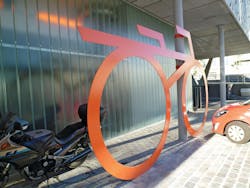Connectivity Czar
Perhaps the time has come for larger transit systems to employ a connectivity director, an energetic, get-things-done type to pave the way for riders. The ideal candidate would have an understanding of the current challenges, and would possess the political skills, technological grasp and imagination necessary to make a transit experience as free from technical difficulties and obstacles as possible. Currently, most systems spread these responsibilities amongst several people. Rethinking the role, recognizing its importance, and integrating the tasks could yield huge benefits with seamless transport.
The model of seamless transport, at least in the last century, assumed or involved use of a car or taxi. That model is no longer the assumption. Trends in traffic congestion, parking availability and costs, environmental impact and the overall costs of car operation have led to a migration to alternatives such as bicycles, car sharing, transit and walking. Use of these options is sure to increase as access develops and connectivity becomes more refined.
Connectivity takes many forms, and that’s really the challenge. One weak link and the connected trip doesn’t work. It’s not just the first mile – last mile challenge, although these connections are often problematic. If out-of-town visitors can’t find connections due to poor signage, bad locations or lack of technology solutions, if locals need several fare cards for a daily trip, or can’t bring their bike on some buses, the journey is hardly seamless. To remove the friction between modes requires active and ongoing management.
This proposal requires investment, given the time and resources that must be devoted to these activities. Is it too bold to suggest that transit bus loading zones at airports be relocated where they can be easily spotted, instead of relegated to the far reaches of the ground transportation zone? A zealous advocate could make this possible. When you add in initiating partnerships with local employers, schools, sports venues, shopping centers and other destinations, and then continuing to communicate and improve these partnerships, this position could yield potentially huge returns on that investment.
With technology-based solutions rapidly evolving to bring even more value to both agencies and customers, sometimes at high cost, it makes sense to coordinate under the purview of one manager tasked to bring return on investment.
Public transportation customers trade the convenience of a car or taxi for the challenges and rewards of getting door-to-door without the most direct route. To attract and retain riders it makes sense to make it the best experience possible.
The International Transport Forum will hold its Annual Summit on the topic of “Seamless Transport: Making Connections” May 2-4 in Leipzig, Germany. For more information, go to internationaltransportforum.org.
